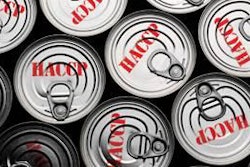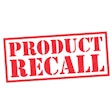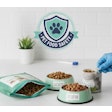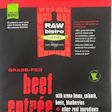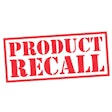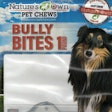The Internet is certainly replete with opinions about commercial petfoods and their regulation. Much of what’s on the Web is extremely disparaging of both the industry and government. It is neither my duty to defend the petfood industry nor my intent to engage in debate regarding its practices, as petfood companies are very capable of doing that themselves if so inclined.
However, I’ve noticed a number of adverse opinions about petfoods that appear to be based on misunderstandings of either Food and Drug Administration or Association of American Feed Control Officials rules. Only a few of these are discussed below.
I am not a US constitutional scholar, but as I understand it, the First Amendment protects freedom of speech, even if that speech is not factually accurate. Still, I would hope that on at least some issues, these misinterpretations could be corrected.
GRAS ingredients. In 2010, FDA issued a Federal Register Notice that it would begin accepting GRAS (generally recognized as safe) notifications for animal feed ingredients. This action was viewed by some on the Internet as a new concession by government to provide more laxity in allowing untested ingredients in petfoods. “No unbiased proof required!” it has been exclaimed. Warnings for purchasers to be vigilant were issued, as if hundreds of new ingredients would start to appear on petfood labels.
To be fair, at least some in the industry reached the same conclusion. For example, one of my clients asked, “Does this mean we can just say ‘substance X is GRAS’ and feed control officials can’t object anymore?”
While GRAS notifications are relatively new for animal feeds, GRAS per se is not. In fact, manufacturers have had the opportunity to conduct a self-determination of GRAS for a new human food or animal feed ingredient since 1958, with no legal obligation to submit anything to FDA.
The more recent notification process allows companies to submit its basis for concluding a substance is GRAS for FDA review, and while FDA does not formally “approve” its use, it does offer tacit acceptance in terms of a “no questions” letter. However, FDA can also disagree with the notifier’s conclusion with a “no basis” letter. As of the time of this writing, only three notifications for animal feed ingredients have been filed.
Regardless of whether FDA is notified, the burden of proof of safety is very high: the same quantity and quality of data as required for a Food Additive Petition. Also, the preponderance of data must be publically available (such as in peer-reviewed scientific literature) and generally acceptable to unbiased experts in the field as suitable evidence of safety. Combined, these factors make the GRAS process one of the most difficult means of sanctioning use of new ingredients, definitely not a more lax alternative to other methods.
AAFCO-defined animal feed ingredients in petfoods. According to some critics, in addition to items like meat and poultry meals and by-products that they find objectionable, many other admittedly unappetizing ingredients defined by AAFCO, such as “Food Processing Waste” (AAFCO #60.96), “Hydrolyzed Hair” (AAFCO #9.54) and “Dried Poultry Waste” (AAFCO #74.1) are commonly included in petfoods. In fact, I was cited as supporting this assertion by virtue of my confirmation that in most cases, there are no restrictions on AAFCO-defined ingredients as to intended species. However, that’s not the whole story.
It is true that without a specification as to intended species in the ingredient definition, an AAFCO-defined feed ingredient could theoretically be added to a petfood as easily as any other animal feed. But beyond the fact that there is no apparent economic or nutritional benefit of adding something like dried poultry waste to a petfood, what is missing from the argument is that if it indeed was added to a petfood, it must be declared on the label by its AAFCO-defined name.
There is no provision in applicable AAFCO or FDA regulations to give the ingredient a fanciful or vague name or to include it in a collective term as allowed for livestock feeds. Since I personally have never seen dried poultry waste on a petfood label ingredient declaration, I can reasonably conclude that it is not used in petfoods.
“Unqualified” claims. The AAFCO Model Regulations for Pet Food and Specialty Pet Food makes reference that a label “may include an unqualified claim, directly or indirectly” with respect to nutritional adequacy statements (see AAFCO PF7(a)). This has been interpreted by some that claims on petfood labels do not have to be substantiated by supportive data. As stated on one website, an unqualified claim “is basically a license to lie to pet owners.” In fact, the opposite is true.
Admittedly, the term as used may be confusing, but “unqualified,” in the context the word is used by AAFCO, does not mean unsubstantiated. Rather, it means unrestricted. A nutritional adequacy statement expressly for growth—“complete and balanced for puppies,” for example—means the product is claimed only to support that lifestage.
An unqualified claim, on the other hand, makes no specific reference to a lifestage or lifestages, so even though not expressly stated on the label, the product is by default intended to be sufficient for all lifestages. Thus, data needed to support an unqualified claim per AAFCO regulations is in fact more demanding than a qualified claim.





